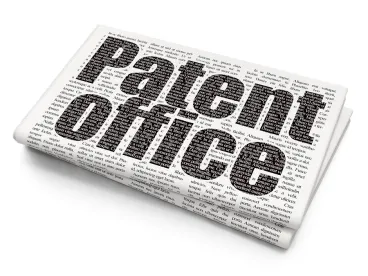Yesterday we discussed the Federal Circuit’s decision in Uniloc 2017 LLC v. Hulu, LLC confirming the Board’s authority to review contingent substitute claims after the original claims have been held invalid by a federal court. Today we cover the panel’s ruling that the Board can use any patentability requirement to evaluate and reject proposed substitute claims in an IPR, notwithstanding that originally-petitioned claims in such proceedings can only be challenged under §§ 102 and 103 based on prior patents and printed publications.
The death knell in Uniloc’s case was § 101. The Board in IPR2017-00948 cancelled many of the challenged claims of U.S. Patent No. 8,566,960 (the “’960 patent”) and rejected Uniloc’s proposed substitute claims as directed to patent-ineligible subject matter. Uniloc appealed this decision, arguing to the Federal Circuit that § 311(b) limits the Board’s review of proposed substitute claims to anticipation and obviousness consistent with the scope of review permitted for petitioned claims.
Writing for the majority, Judge Wallach stated that “[t]he PTAB correctly concluded that it is not limited by § 311(b) in its review of proposed substitute claims in an IPR, and that it may consider § 101 eligibility.” He reasoned that because § 318(a) uses the term “patentability” broadly with respect to evaluating new claims—requiring the Board to “issue a final written decision with respect to the patentability of … any new claim added under § 316(d)”—and because a § 101 analysis constitutes a “patentability” determination, “[t]he plain language of the IPR Statutes demonstrates Congress’s intent for the PTAB to review proposed substitute claims for overall ‘patentability’—including under § 101.”
The Court also disagreed that § 311 constrains the Board’s review of proposed substitute claims to anticipation and obviousness—“Section 311 is confined to the review of existing patent claims, not proposed ones: it limits ‘[a] request to cancel as unpatentable [one] or more claims of a patent’ to a ‘ground that could be raised under [§] 102 or [§] 103[.]” (emphasis in original). Judge Wallach explained that, in contrast, “a substitute claim that has not been issued cannot be ‘cancel[ed],’ and [] is not ‘of the patent’ when proposed by the patent owner” and thus “the limits of § 311(b) do not extend to [it].” Section 311, the Court determined, is “a provision applying to the petition phase of the proceedings” and therefore should not “bind a separate adjudication-stage provision, such as § 316.”
According to the majority, because “substitute claims in an IPR proceeding have not undergone a patentability review by the USPTO,” it makes sense that the Board’s review of these claims “include[s] all patentability questions, including § 101 patent eligibility.” Without this requirement the Board would be forced to issue new claims submitted during an IPR “without ever having determined that the particular claim meets the statutory requirements for patentability,” which would be “grossly out of keeping with the statutory regime as a whole.”
In her dissent Judge O’Malley strongly disagreed, opining that the Board has no authority to reject substitute claims under § 101 and allowing the Board to do so is tantamount to allowing an “anything goes” “full-blown examination” of never-before seen claims. She faults the majority for taking the position that “patentability” means one thing as to “any patent claim challenged by the petitioner” and something entirely different as to “any new claim added under section 316(d).” In her view, interpreting a single statutory term in two different ways contradicts basic principles of statutory interpretation—“we must discern an appropriate, single meaning for a term that is used only once in § 318(a). The sole meaning of patentability must be, therefore, the one contemplated by § 311(b).” Judge O’Malley reasoned that because substitute claims come into existence only after the scope of the IPR has been set, Congress had no need to “rearticulate a parameter already expressed in prior provisions: IPRs are limited to §§ 102 or 103 and to prior art consisting of patents or printed publications.”
Petitioners and Patent Owners should be aware of this important decision. For Petitioners, they now have a § 101 arrow in the quiver for challenging proposed substitute claims. For Patent Owners, they should be mindful of this potential attack when drafting proposed substitute claims. Considering the effect this case will likely have on future IPRs involving claim amendments and in light of the strong dissent from Judge O’Malley, this issue appears ripe for en banc review.




 />i
/>i

